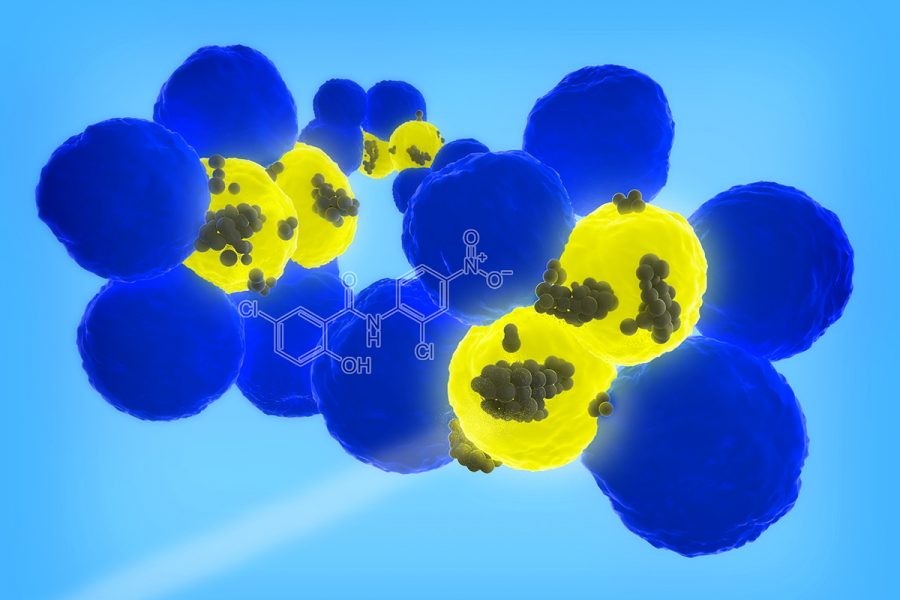UI scientists create drug-delivering nanoparticles to target cancer stem cells
Dec 7, 2017
The University is making major strides in stem cell cancer research, aiming to change the way various types of cancers are treated, as detailed in a recent study.
Santosh Misra, first author of a study published in the journal Molecular Cancer Therapeutics and postdoctoral researcher in engineering, said the study began with looking at the repurposing of a particular drug, niclosamide, and then slowly starting to work toward positive results from cancer stem cell research.
“From there the whole journey was making it (target specific) cancer stem cells and looking at their influence on genes and proteins that are related to the survival of cancer stem cells,” Misra said.
Dipanjan Pan, associate professor in bioengineering and director of professional masters program in bioengineering, led the study. Pan said that other treatments of cancer, such as chemotherapy, work by destroying the regular cancer cells but not capable of treating cancer stem cells since they remain dormant.
However, Pan said these stem cells tend to slowly start to become active again and still hold the properties of stem cells.
Get The Daily Illini in your inbox!
“They always form a cluster and in a cancer cell population, there is always the existence of a few cells that have the capability to grow back,” he said.
Pan said these stem cells are also responsible for taking the regular cancer cells to other parts of the body, causing the cancer to spread.
“Of course we’re interested in treating the regular cancer cells,” Pan said. “But at the same time, we are also interested to make the cancer therapy more sustainable so that it does not come back and allow the other cancer cells to spread to other parts of the body.”
The drug Pan and Misra used in the study has already been approved by the Food and Drug Administration and has been around for over 50 years.
“In this particular way, (the drug) can act on the cancer stem cells and minimize the growth of the cell,” Pan said.
He said because the drug has already been approved by the FDA, they saved a lot of time and can focus more on the development of applying it to cancer therapy.
The problem they have been trying to solve is how to deliver this drug to the cancer stem cells. The answer was in nanoparticles.
“Nanoparticles are actively targeted,” Pan said. “They know where to go, where to seek out the cancer stem cells.”
Pan said the nanoparticles are designed to target even a tiny population of cancer stem cells. They do not have an impact on other cancer cells or regular cells because they are programmed to look for the properties of stem cells.
For this study, the two used rodents for testing. They looked at genes and proteins after using breast cancer cells and their developed drug-delivering nanoparticles, Misra said.
Pan said their work is only published using breast cancer cells, but they have tested on melanoma and saw positive results.
Pan and Misra are working to show their way of therapy can be used on many other cancers.
“I would say it is a very generalized therapy approach,” Pan said.
In the next steps, Pan and Misra said they plan to test on other types of cancer and larger animals, like pigs. So far with rodents, though, they have seen minimal issues.
“As for the tests we’ve done for efficiency and safety, we have seen good efficiency and no safety concerns,” Misra said.
Pan said pigs have organ systems similar to humans, so they would be able to see any potential concerns with humans in the next steps.
Once they have completed the testing of nanoparticles on pigs successfully, the two can then apply for FDA approval.
Andrew Smith, associate head of undergraduate programs and assistant professor in Engineering, said this is just a stepping stone for the University to become leaders in the pharmaceutical field.
“A big mission of all this is to have an impact on human patients, improve their health and do it through pharmaceutical sciences, which is basically delivering drugs to diseases,” Smith said.
Pan said this is just the beginning, and the University and cancer world can expect more from their research.
“We were trying to not just stop the cancer cells from growing, but we are trying to make cancer therapy more sustainable,” Pan said. “We are trying to increase the lifetime of a cancer patient.”






